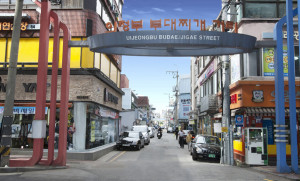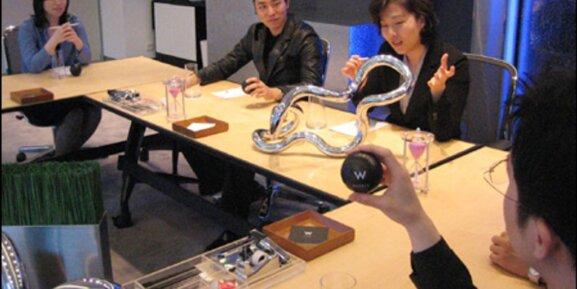Delicious Roots: The Story of Budae Jjigae
Budae jjigae is an intriguing dish that leaves many who first come across it quite perplexed. The dish’s red-hues and sharp, spicy scents makes one think it is decidedly a Korean dish and yet the addition of ingredients such as sausage slices, baked beans, and processed cheese slices seemingly throws that initial thought upside down.
Its odd makeup is owed to its interesting history but has since become a beloved dish for Koreans and non-Koreans alike. Restaurants that specialize in budae jjigae, or at least have the dish on their menu, are found in any major commercial area in Korea but the story behind this fascinating hybrid dish is a rather unique one which shows how the intermarrying of cultures can result in some interesting (and delicious) results.
Scarcity Gives Way to Ingenuity for Survival
The devastating Korean War left an aftermath that affected millions who were injured, displaced, separated, and trying to find hope while rebuilding their lives. Basic needs such as food, water, and shelter became of utmost importance and for many Koreans relief came from the pockets of foreign, and especially American, military presence following the end of the war. Food and other supplies from the American bases, both by legal and illegal means, became one of the more reliable sources of post-war survival which led to entirely new communities, makeshift shops, and markets forming around or near these bases.
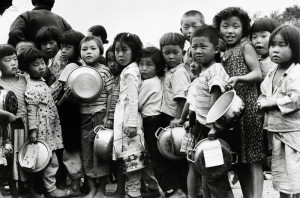
Of course, even before the Korean War, most Koreans were already familiar with canned, dried, and evaporated food, but it was only after the Korean War that these food items became major sources of nutrition which led to Koreans looking to recreate their familiar Korean dishes and flavors using these supplies. Stews and soups were particularly popular choices of food to make as they could be maximized to feed families or large groups.
Euijeongbu – The Birth of the “Army Base” Stew
Just slightly to the northwest of Seoul lies the city of Euijeongbu, where Korean and American military bases have stood for decades. Euijeongbu’s Jeil Sijang, or Jeil Market, began rather humbly with vendors selling many items from the nearby bases in a black market-setting. Sausages, SPAM, cans of beans, minced meat, macaroni noodles, were just some of the items available in this market and the restaurants within often found patrons bringing such supplies to them and asking that they make dishes using these ingredients.
Among these dishes, the one that would become most famed was an intriguing stew which involved cooking together these American ingredients with the flavors of Korean cuisine (usually from red chili flakes, kimchi, etc) and vegetables to create a hearty dish that the Koreans found to their liking. This dish was known by many names including “Johnson Tang” (meaning “Johnson Soup” and named after American President Lyndon B. Johnson) but the name that primarily stuck with it was “budae jjigae” or literally, “army base stew”.
Its popularity quickly spread with more restaurants in the Jeil Market putting this hybrid dish on their menu. Today, within the same Jeil Market in Euijeongbu, you’ll find some 30+ stores that have specialized in budae jjigae for decades. And though the ingredients for the stew are now purchased imported goods, budae jjigae’s name and linkage with the military remains. By the mid 1980s, Korea began selling its own versions of processed meats which then cemented budae jjigae as a commercial Korean dish. Koreans later began adding other ingredients to the dish such as instant ramen noodles, fish cakes, dumplings, etc, which we mostly know and recognize its form today. The dish is so beloved that there are even instant ramen that comes in the budae jjigae flavor.

Where to Try Budae Jjigae
Nowadays, budae jjigae is commonly found throughout Korea with even chain restaurants capitalizing on their widespread popularity. But a few standouts remain, not only for their many decades of operations but their die-hard fans who each claim his or her favorite budae jjigae restaurant serves the best pot in Korea. As for who is right, we’ll let you decide after paying a visit to these budae jjigae institutions:
Odeng Shikdang – Euijeongbu
Among the budae jjigae restaurants in Euijeongbu, Odeng Shikdang is the one that’s considered the progenitor of it all. Odeng Shikdang has been in operation since 1960 (officially since 1968) when the restaurant’s owner, the late Heo Gi Sook, started stir frying minced meat, ham, and other processed meat from the base with Korean ingredients such as kimchi and red pepper paste to sell a dish called budae bokkeum (army base stir fry). This soon led to the creation of a stew version we now call budae jjigae.
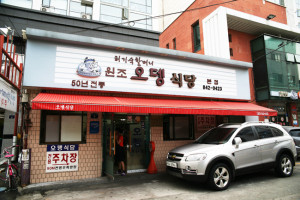
Because such meat from base were technically illegal outside the base’s grounds, the restaurant called itself “Odeng Shikdang”, which means “fish cake restaurant”, to not arouse any suspicions but the name, and the restaurant’s signature dish has remained to today. Its steady rise in recognition and popularity sparked similar restaurants to set up shop nearby (including one restaurant just 50m away looking to capitalize on the famed name and calling itself, Odeng Budaejjigae) which is what gave birth to Euijeongbu’s famed budae jjigae alley. Many of the restaurants there claim to be the first but most agree that Odeng Shikdang is the one that started it all.
220-58, Uijeongbu 1-dong, Uijeongbu-si, Gyeonggi-do, Korea
031-842-0423
Bada Shikdang – Seoul
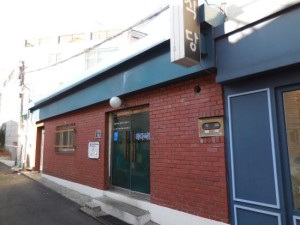
Though Euijeongbu is the city associated with budae jjigae, plenty of other restaurants in other parts of Korea began selling the dish, or something similar, around the same time. In Seoul’s Itaewon, just by the Yongsan American military garrison, Bada Shikdang officially began in 1970 selling its budae jjigae as Johnson Tang- which is still the dish’s name here to this day. The restaurant’s founder spent a few years in Germany which influenced him to add slices of cheese to the budae jjigae here for a more “Western”-like stew and the restaurant continues to add cheese slices to its stew to this day. The restaurant’s influence from the American base nearby is clear in its menu which not only offers budae jjigae but such American dishes as barbecue pork ribs, pork chops, T-bone steak, turkey and beef sausages, etc.
02-795-1317
743-7, Hannam-dong, Yongsan-gu Seoul 140-893 South Korea
Choi-ne Jib – Pyeongtaek
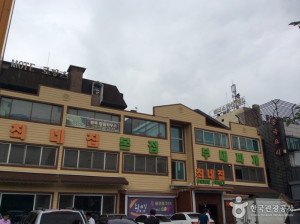
Choi-ne jib, which literally means “Choi’s house”, opened its doors in 1970. The restaurant’s founder worked in the Osan Camp nearby and would often cook with the meat and supplies from the base which was met with rave results from friends who urged him to open a restaurant. The budae jjigae from this surrounding vicinity is largely regarded as having the strongest (some say saltiest) flavor which packs the stew with not only the usual sausages, ham, cheese, and minced meat but flavorful vegetables such as garlic, green onion, and onions.
031-663-8922
79-3, Seojeong-dong, Pyeongtaek-si, Gyeonggi-do, Korea
Budae Jjigae Silbijib – Dongducheon
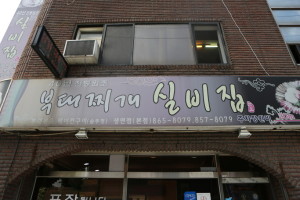
Like Euijeongbu nearby, Dongducheon got its start from the early 1970’s when shops would sell stir fried budae dishes. The inclusion of minced meat, ham, and sausages are similar with the budae jjigae of other regions but Dongducheon’s stews vary slightly with the addition of udon and/or dangmyeon (glass noodles). They also add green onions, onions, and crown daisy to the broth making it one of the more “greener” budae jjigaes around.
031-865-8079
690-2, Saengyeon-dong, Dongducheon-si, Gyeonggi-do, Korea
Yangji Budae Gogi – Incheon
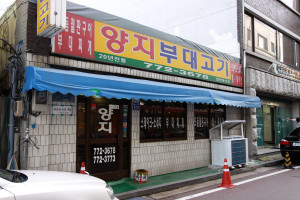
Though it’s located in Incheon, Yangji Budae Gogi has strong ties with Namdaemun Market as the owner started his version by purchasing the meat supplies from the American base at Namdaemun and then developing his recipe. The broth for Yangji Budae Gogi is made from simmering beef leg bones for a deeper flavor which is later joined by soybean sprouts, garlic slices, and garlic powder among other ingredients. The budae jjigae here also differs as the restaurant doesn’t use minced meat but cuts of actual beef.
031-772-3678
2-48, Sinsaeng-dong, Jung-gu, Incheon, Korea

